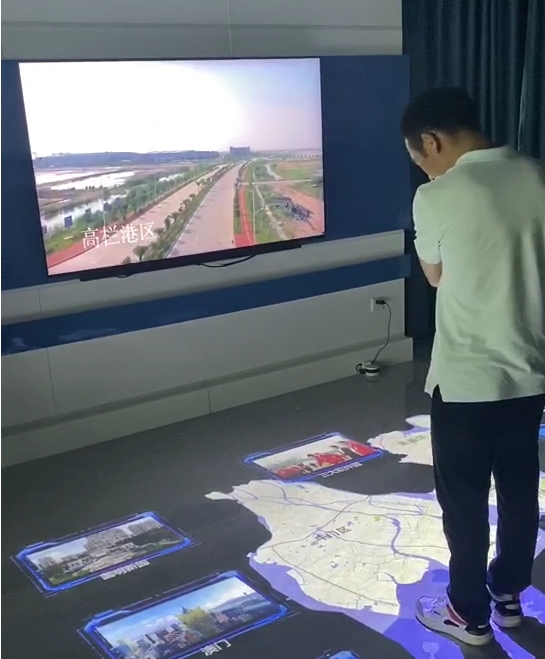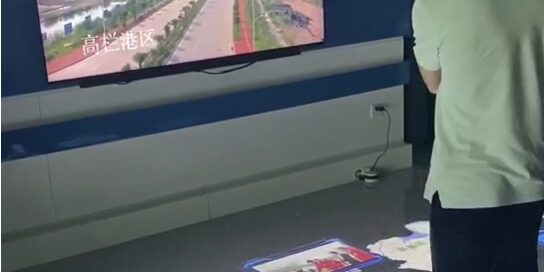POE LiDAR-based interactive floor projection technology utilizes motion tracking to transform any projector, LCD screen, LED display, plasma screen, or digital video wall into an interactive surface. By suspending projection equipment overhead, images are cast onto the floor. When people enter the projection area, the system detects their movements, allowing them to interact with the virtual scene using their feet or other body parts. The interactive effects dynamically respond to these actions, creating a highly engaging and enjoyable experience. This technology is incredibly versatile and can be applied in a wide range of settings.

Let’s explore some of the most common applications of POE LiDAR-based interactive floor projections.
1. Retail and Shopping Centers Interactive floor projections can turn a mundane shopping trip into an exciting adventure. Imagine walking into a store and seeing your footsteps create a trail of colorful lights or playing a virtual game on the floor. These interactive elements not only attract customers but also encourage longer dwell times and increased spending.
2. Museums and Exhibitions Museums and exhibitions can benefit greatly from interactive floor projections. By bringing exhibits to life, these projections create a more immersive and educational experience for visitors. For instance, a history museum could use interactive floors to recreate historical events or allow visitors to explore ancient civilizations.
3. Restaurants and Hotels Interactive floor projections can enhance the ambiance of restaurants and hotels. Imagine dining on a floor that displays a starry night sky or a serene underwater scene. These visual effects can create a more memorable dining experience and set your establishment apart from the competition.
4. Event Venues Event venues, such as conference centers and convention halls, can use interactive floor projections to create stunning backdrops for presentations, product launches, and other events. These projections can be customized to match the theme of the event and create a lasting impression on attendees.
5. Educational Institutions Interactive floor projections can be used in educational settings to make learning more engaging and fun. For example, students can learn about different subjects by interacting with projected images on the floor. This hands-on approach can improve understanding and retention.
6. Theme Parks and Attractions Theme parks and attractions often use interactive floor projections to create immersive experiences. For instance, a theme park could use projections to create a virtual world that visitors can explore and interact with.
Key Benefits of POE LiDAR Interactive Floor Projections
- Enhanced Customer Engagement: Interactive floor projections create a more engaging and memorable experience for customers.
- Increased Foot Traffic: Unique and visually appealing installations attract more people to your location.
- Brand Awareness: Interactive experiences can help to increase brand awareness and loyalty.
- Versatility: LiDAR technology allows for a wide range of interactive applications.
- Scalability: Systems can be customized to fit spaces of any size.
Conclusion
POE LiDAR-based interactive floor projections offer a versatile and effective way to create immersive and engaging experiences. Whether you’re looking to enhance your retail store, museum, or event venue, interactive floor projections can help you stand out from the competition and create lasting memories for your customers.
Keywords for SEO: interactive floor projections, LiDAR, immersive experiences, digital signage, retail marketing, event planning, museum exhibits, technology, innovation







